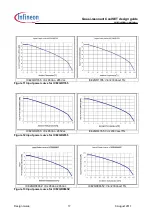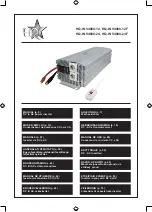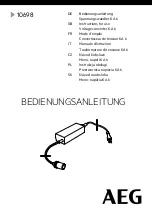
Quasi-resonant CoolSET design guide
ICE2QRxx65/80x
Design Guide
9
8 August 2011
Figure 4 VCC voltage at start up
When the VCC voltage exceeds the turned-on threshold
V
VCCon
at time
t
1
, the startup cell is switched off, and
the CoolSET begins to operate with a soft-start. Because the energy from the auxiliary winding is not enough
to supply the CoolSET operation when output voltage is low, the VCC voltage drops (Phase II). Once the
output voltage is high enough, the VCC capacitor receives energy from the auxiliary winding from the time
point
t
2
on. The VCC voltage will then reach a constant value depending on output load.
Precaution : For a typical application, start up should be VCC ramps up first, other pin (such as FB pin)
voltage will follow VCC voltage to ramp up. It is recommended not to have any voltage on other
pins (such as FBB; BBA and CS) before VCC ramps up.
4.1.1
VCC Capacitor
Since there is a VCC undervoltage protection, the capacitance of the VCC capacitor should be selected to be
high enough to ensure that enough energy is stored in the VCC capacitor so that the VCC voltage will never
touch the VCC under voltage protection threshold
V
VCCUVP
before the output voltage is built up. Therefore, the
capacitance should fulfill the following requirement:
VCCUVP
VCCon
1
2
VCCop
VCC
V
-
V
)
t
-
(t
I
C
[6]
with
I
VCCop
the operating current of the CoolSET.
4.2
Soft-Start
After CoolSET supply voltage is higher than 18V, which corresponding to t1 of Fig.4, CoolSET will start
switch with a soft start. The soft start function is built inside the CoolSET in a digital manner. During softstart,
the peak current of the MOSFET is controlled by an internal voltage reference instead of the voltage on FB
pin. The maximum voltage on CS pin for peak current control is increased step by step as shown in Figure 5.
The maximum duration of softstart is 12ms with 4ms for each step.
During softstart, the over load protection function is disabled.
Figure 5 Maximum current sense voltage during softstart










































